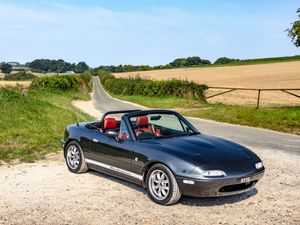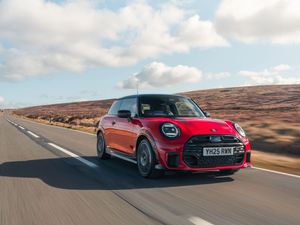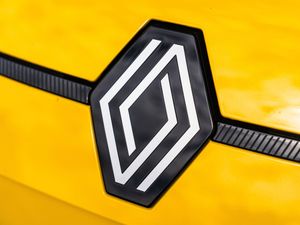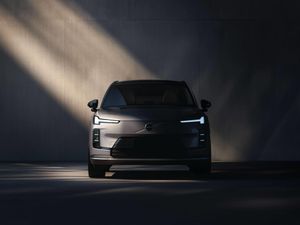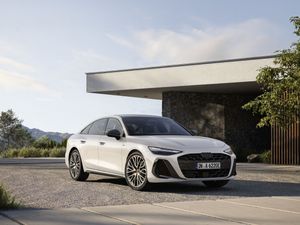UK drive: Mazda has fitted its new 2.5-litre petrol engine to its CX-30
Based on the brand’s smaller Mazda3 hatchback, the CX-30 offers a sporty look with green credentials. Cameron Richards reports.
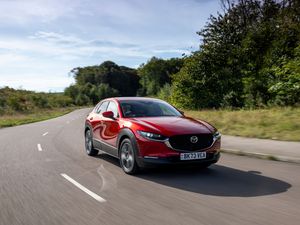
What is it?

Mazda has been a brand of innovation and reinventing the wheel, and even in 2024, it’s still doing things differently.
Like most car manufacturers following the EV path, Mazda has decided to offer an eclectic mix of different powertrains for its cars, including petrol, diesel and even a rotary-type range extender plug-in hybrid.
The Mazda3, CX-30 and MX-5 have been the brand’s bread and butter over the last few years proving very popular with customers for their good looks and sporty driving experiences, but what’s the latest CX-30 like to drive? We’ve been finding out.
What’s new?

On the face of it, the CX-30 looks identical to the outgoing one, and that’s because it is.
The changes lie beneath with a new 2.5-litre petrol engine that boasts mild-hybrid technology to boost its overall efficiency.
It still retains the same exterior styling and interior layout, and there are still multiple different drivetrains and body colours to choose from.
What’s under the bonnet?

We’re driving the latest addition to the CX-30 range and that is a new 2.5-litre four-cylinder petrol engine that packs mild-hybrid technology. It replaces the old 2.0-litre unit and Mazda calls it its e-Skyactiv G engine.
In terms of power, it produces a total of 138bhp and 238Nm of torque, while 0-60mph is dispatched in 9.5 seconds and the car will go onto a top speed of 121mph. Mazda also claims this new engine will achieve a combined figure of 47.1mpg and has CO2 emissions of 136g/km. In comparison, the old 2.0-litre unit had a claimed combined MPG figure of 47.9mpg and 134g/km of CO2.
This new engine offers almost identical fuel economy and emissions figures, while being more powerful and smoother than the outgoing powertrain.
Other engines in the CX-30 range are a more powerful e-Skyactiv X 2.0-litre petrol engine with 183bhp and 240Nm of torque.
A choice of manual and automatic transmission are available as well as a four-wheel-drive option.
What’s it like to drive?

Immediately when you get behind the wheel, you can tell that not only does the CX-30 share its chassis with the Mazda3, but some of its DNA from the firm’s MX-5 sports car has been sprinkled upon it.
Our test car is fitted with the six-speed manual gearbox and it’s a joy to use thanks to its very precise feeling, short throw and slick action. The driving position is good with you sitting lower than you normally would in an SUV, and there is lots of adjustment in the seat and steering wheel. The handling has been very finely tuned with the car taking corners very well with little body lean, lots of grip and nicely weighted steering, making this Mazda great fun to drive.
The new engine is quiet and refined and we managed 45mpg, which isn’t too far off the claimed manufacturer figure. Around town, the controls are nice and light and the clutch pedal makes it easy to find the biting point. But, visibility isn’t one of the CX-30’s strong points with the small windows all around limiting your view when manoeuvring.
On the motorway, although the engine is smooth and refined, the cabin does pick up on a bit of wind and road noise making the Mazda not quite as comfortable on longer distances compared to some of its European rivals.
How does it look?

Mazda very rarely produces an ugly car and the CX-30 is no different. From some angles, you could mistake it for the outgoing CX-3 with its very large black plastic wheel arches and lower body mouldings.
At the front, the headlights wrap around the bonnet and seem into the front grille and at the back, the car has similar design elements to the Mazda3 hatchback with its swooping tailgate and circular rear tail lights.
Plus, our test car is finished off in Soul red crystal which is a colour synonymous with Mazda it has used on its cars for the past decade and it really does pop in the sun.
What’s it like inside?

The interior of the CX-30 is also identical to the Mazda3 with its 10.25-inch centre infotainment screen that is controlled by a swivel wheel, which is very easy to use when on the move.
Our test car features the black and brown effect dashboard with leather inserts and it feels plush and premium to the touch. There are physical climate control buttons and there is a handy button located towards the right of the steering wheel where you can set personal driver assist systems to be muted.
Storage is plentiful with deep door bins, two cup holders and a rather large centre armrest with underfloor storage, plus a good-sized glove compartment.
Space in the back is a mixture because leg and knee room is plentiful, but average-sized adults may struggle for headroom. Boot space is down on its rivals standing at 430 litres and 1,406 litres with the rear seats folded – which incidentally do not fold flat.
What’s the spec like?

Mazda offers the CX-30 in plenty of permutations consisting of Prime-Line, Centre-Line, Homura, Exclusive-Line and Takumi.
The range kicks off at £25,415 for the base model, making it cheaper than a Ford Puma. All cars come equipped with LED headlights, rear parking sensors and radar-guided cruise control.
Our test car is the top-of-the-line Takumi that comes in at £31,115, but boasts leather upholstery with heated steering wheel and front seats, an electric tailgate, a Bose premium audio system and adaptive LED headlights.
Verdict
Mazda’s CX-30 is a likeable, good to drive and well-equipped compact SUV that now features a more efficient and refined engine as well as being competitively priced.
It may not be the most practical car in this sector with a smaller boot capacity and less space in the back for occupants, but that shouldn’t put you off as this is a quality car that not only looks good but should be affordable to run, too.

